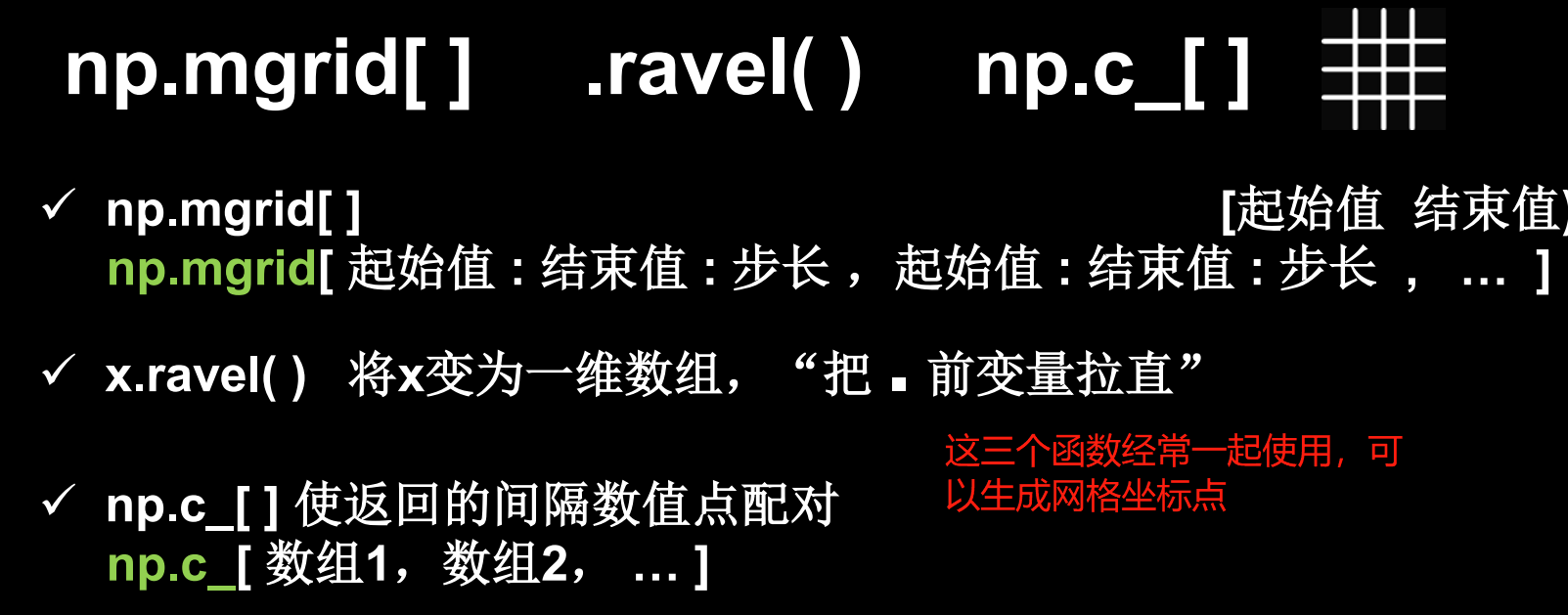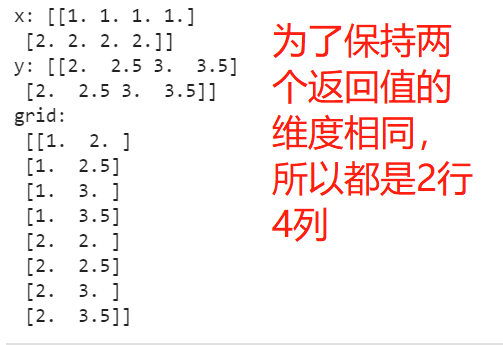1.tf.where()

import tensorflow as tf
a = tf.constant([1,2,3,1,1])
b = tf.constant([0,1,3,4,5])
c = tf.where(tf.greater(a,b), a, b) # 若a>b,返回a对应位置的元素,否则返回b对应位置的元素
print('c:', c)
输出结果:

2.np.random.RandomState.rand()

import numpy as np
rdm = np.random.RandomState(seed=1) # seed=常数,每次生成随机数相同
a = rdm.rand() # 返回一个随机标量
b = rdm.rand(2, 3) # 返回维度为2行3列的随机数矩阵
print('a:', a)
print('b:', b)
输出结果:

3.np.vstack()

import numpy as np
a = np.array([1, 2, 3])
b = np.array([4, 5, 6])
c = np.vstack((a, b))
print('c:
', c)

4.

mgrid[]返回若干组维度相同的数组
x.ravel(), y.ravel()分别将x,y拉直成一维的
import numpy as np
x, y = np.mgrid[1:3:1, 2:4:0.5]
grid = np.c_[x.ravel(), y.ravel()]
print("x:", x)
print("y:", y)
print("grid:
", grid)
